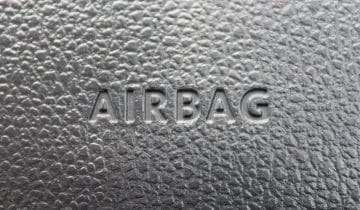Weaving is a textile manufacturing technique in which two sets of threads are crafted together to create a flexible, durable fabric or cloth. It’s a lifesaver for many people who utilize it to relieve stress and get some much-needed alone time. Weaving is an uplifting art form, but when applied to save lives, it has a significant impact. Every time you get into your car, there’s a piece of woven cloth that could save your life—the seat belt.
Learn more about the amazing makings of seat belt webbing in the sections below.
Nature and History of Seat Belts
Seat belts are unique not merely because of the machines that spool out and tension the seat belt but also because of the material itself.
Webbing, the cloth that makes up the belt, is meticulously constructed to have extraordinary tensile strength—approximately 3000-6000 lbs. Since their adoption by the car industry in the 1950s, seat belts have prevented a large number of deaths each year.
Shuttle looms were used to weave the first seat belt webbing, which could only weave around 200 picks every minute. Since 1975, the majority of webbing has been produced on needle looms capable of producing 1000 picks every minute.
Main Raw Materials Used to Make Seat Belts
Cotton, polyester, nylon, and polypropylene are some of the materials used in car belts. Polyester is a robust, durable, and flexible material, but it has one big flaw. The seat belt can be ripped from the body even while the vehicle is moving due to the unusual polyamide composition.
Seat belts made of polyester are a novel solution to this problem. They are made of polyester, but RHI has replaced 95 percent of the nylon in them, resulting in a comfortable seat with high workplace safety.
Polyester is now commonly used for seat belt material. Nylon was once the most common fabric, but it now stretches more than polyester and is more susceptible to damage.
Seat Belt’s Lesser-Known Yet Powerful Material
The least prevalent type of material used in automobile seat belts is “star.” It’s the material that’s underneath the cotton cushioning and wraps around the harness.
This substance is mechanical in nature and will not melt when exposed to temperatures of up to 500 degrees Fahrenheit. It is resistant to bleach and ammonia, as well as detergents, water, and a variety of other chemicals.
It also offers advantages for people who use car seat belts. Drivers don’t have to worry about loose clothing because the seat belt does not heat up. Also, they shouldn’t be concerned about a tight seat belt because the automobile will only push them back into their seats if they are in a crash.
Conclusion
Nowadays, seat belts are usually made of 100 percent polyester. Less-energized yarns, according to research, produce more durable seat belts because the threads can pack together more tightly. Seat belt webbing typically has about 300 warp threads per 46mm belt or nearly 150 ends per inch.
Modern seat belts have run-proof selvages that are reinforced with strong threads while still allowing the belts to be flexible. Even if they become worn out, you can easily replace them to maintain your safety inside a moving vehicle.
If you’re looking for high-quality seat belt repairs, you can turn to Safety Restore. We’re the world’s leader in post-accident restorations, specializing in seat belt repairs and airbag modules. Check out the rest of our services today!


